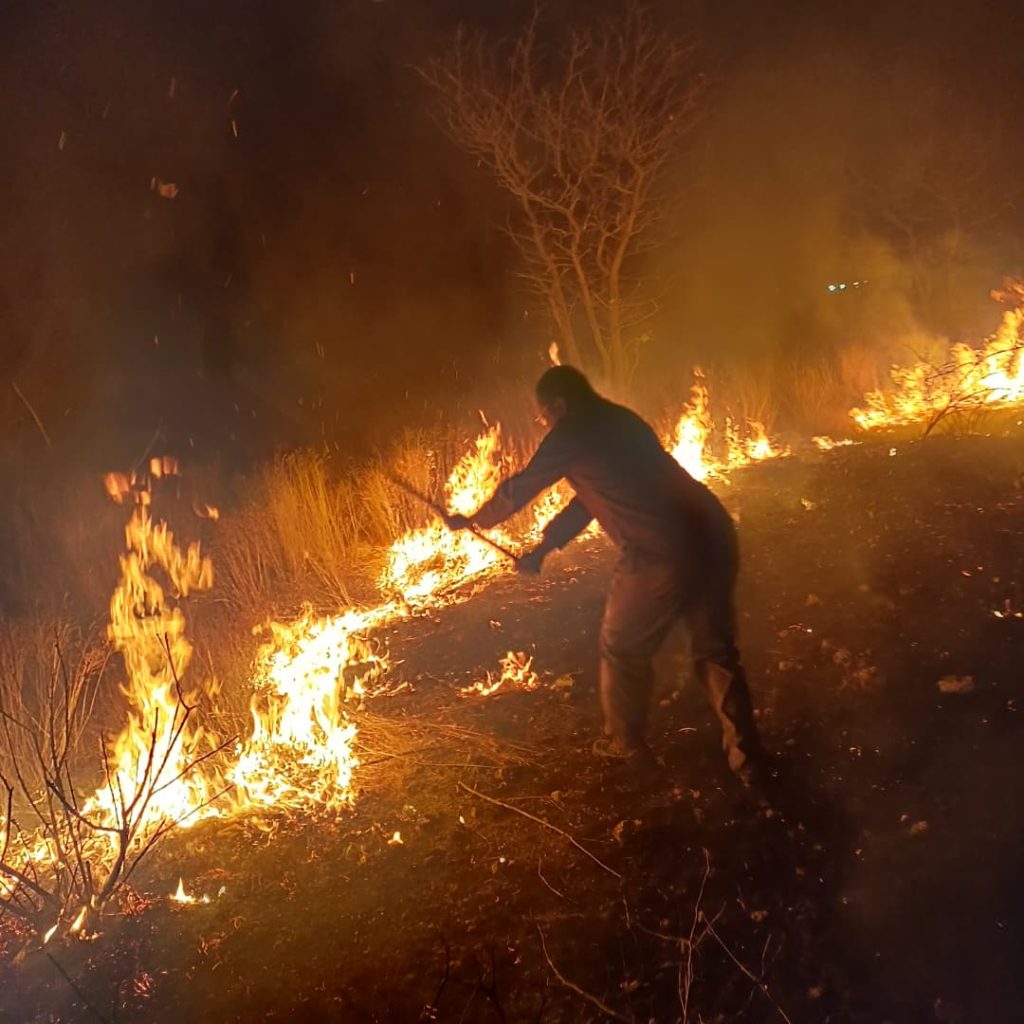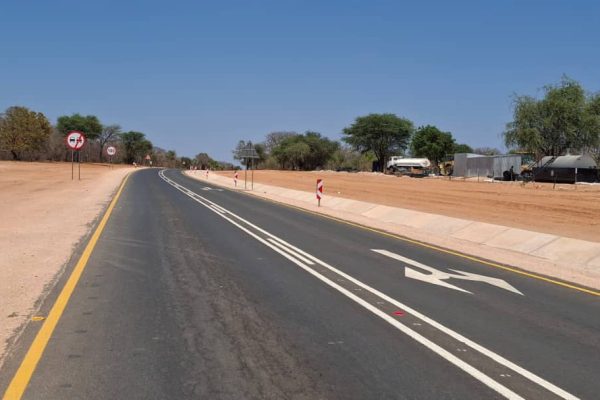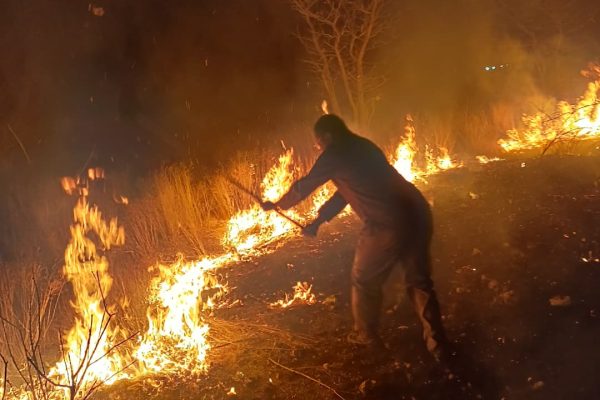
By: Dwight Links
The Charcoal Association of Namibia (CAoN) has placed blame squarely on resettlement farms not adhering to the firebreak standards in the production of charcoal as the cause of the Etosha wildfire.
According to the CAoN, which issued a statement on the fires, the charcoal industry has been active in ensuring that members control fires in their production methods, adding that the country has always been good at that.
The association pointed to failed standards known as firebreaks, which are meant to stop the spread of a fire from one area to another.
“Namibia has successfully contained bush and veld fires this season and in past years. While neighbouring countries suffer devastating losses of grazing and soils, Namibian farmers have generally kept losses to a few thousand hectares. This reflects constructive collaboration between Namibia’s farmer community and state authorities,” the statement from the association read.
“CAoN notes, however, that the same diligence is not always applied across the wider agricultural sector. For example, the Department of Forestry-mandated firebreaks were reportedly not implemented at Farm Heellaas, where the current Etosha fire began. CAoN members would not receive permits without such compliance,” added the statement.
In addition to their members’ standard procedure of working in collaboration with the Ministry of Environment, Forestry and Tourism’s Department of Forestry, firebreaks are essential to their businesses. The association attributed liability on resettlement farms for not adhering to these standards and urged the forestry department to hold all farms that engage in charcoal manufacturing to the same standards.
According to the MEFT, various agencies dispatched aid to combat the breakaway wildfire that has plagued the Etosha National Park and nearby communities in the Omusati and Oshana Regions.
“In collaboration with the Namibian Defence Force, Namibian Police Force, regional councils, local communities, and private partners, the Ministry continues to coordinate extensive efforts to contain and manage the fires,” Minister Indileni Daniel commented through a statement issued by her office on Saturday.
The environment ministry states that the fires began on 22 September supposedly as a result of nearby charcoal production.
“The fires began in the south-western part of the park due to suspected charcoal production activities on bordering commercial farms, and have since spread to the western, central, and southern zones of Etosha National Park,” the minister added.
Official analysis of the most affected areas include Dolomite (north and south), Okatutu, Renostervlei, Jackalswater, Halali, and the area between Olifant’s Bad and Halali.
HABITAT AND WILDLIFE LOSS
MEFT also pointed out that the loss of vegetation amounted to about a third of the park’s size, and that wildlife loss had thus far been minimal. At least nine antelope casualties have been sighted in fire-affected areas, while a pangolin was successfully rescued.
The ecological damage in Etosha is estimated at almost a million hectares ( 775,163 hectares), approximately 34 percent of the park. Outside of Etosha, about 171,098 hectares of land has been affected, including 156,315 hectares north of the park and 14,783 hectares to the south, the ministry confirmed.
Wind has reportedly been another contributing factor to the severity of the fires raging in and around the park.
The wildfire crisis in Etosha National Park and surrounding areas poses a significant threat to Namibia’s biodiversity, local livelihoods, and critical infrastructure.









